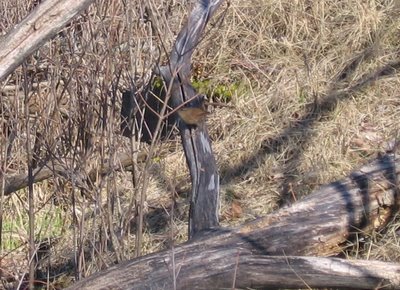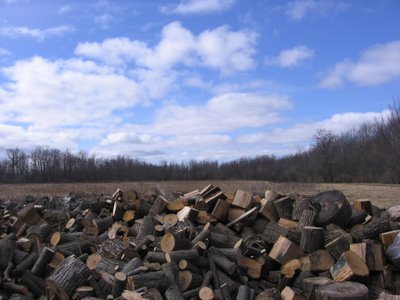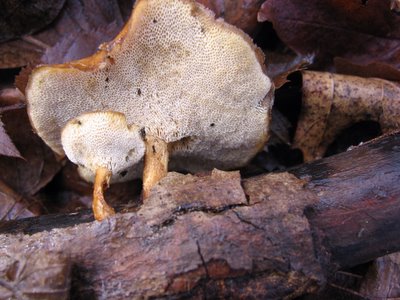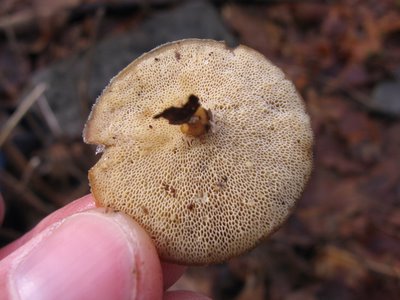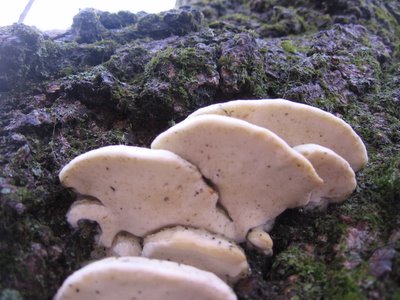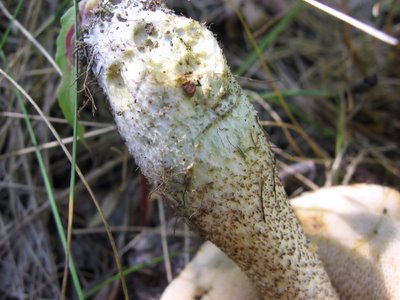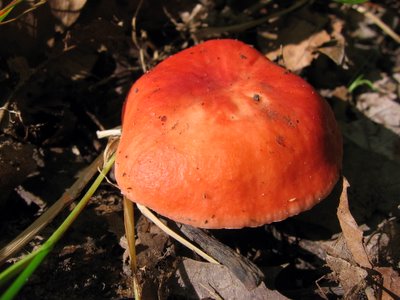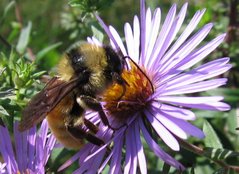
Showing posts with label Lemoine Point. Show all posts
Showing posts with label Lemoine Point. Show all posts
Thursday, January 11, 2007
Sunday, January 07, 2007
Sunday, December 10, 2006
Saturday, December 09, 2006
Wednesday, November 15, 2006
Red-tailed Hawk at the Point





 Found this Red-tailed Hawk at Lemoine Point near the boardwalk in the swamp. At first he was perched at the top of one of the dead trees but when he spotted me he moved to this higher perch in the big tree nearby. When he left the lower perch he swooped on a duck that was sitting in the swamp. The duck put up a racket but the hawk just flew off. The chickadees of course are always glad to pose for a picture.
Found this Red-tailed Hawk at Lemoine Point near the boardwalk in the swamp. At first he was perched at the top of one of the dead trees but when he spotted me he moved to this higher perch in the big tree nearby. When he left the lower perch he swooped on a duck that was sitting in the swamp. The duck put up a racket but the hawk just flew off. The chickadees of course are always glad to pose for a picture.
Friday, November 10, 2006
Lemoine Point
 Beautiful, warm, sunshine at the Point today. The rest of the weekend and next week calls for rain. Sun and moon shared the sky this morning and provided a backdrop for the gathering of flocks of birds preparing to head south for the winter.
Beautiful, warm, sunshine at the Point today. The rest of the weekend and next week calls for rain. Sun and moon shared the sky this morning and provided a backdrop for the gathering of flocks of birds preparing to head south for the winter. The trees were full of flocks of birds. This one contained a gathering of House Finch, a few trees down was a large flock of Red-winged Blackbirds who were finished with their work in the swamp but not quite ready to leave town.
The trees were full of flocks of birds. This one contained a gathering of House Finch, a few trees down was a large flock of Red-winged Blackbirds who were finished with their work in the swamp but not quite ready to leave town.
Friday, April 14, 2006
Spring Migration Continues
 Jumping Spider of some kind
Jumping Spider of some kindLemoine Point, Kingston, Ontario
I took the two pictures above at Lemoine Point yesterday. The Winter Wren is secretive and very small. I spent about an hour getting close enough to take this distant shot. I first saw it on the edge of a swampy area near a limestone ledge. It always kept low and was very furtive in its movements. It wasn't until another Wren came along that the two became more comfortable with me being there. By the time I was finished I was covered in burrs and had lost my cell phone. An hour's work removed the burrs from my fleece and a kind stranger found my cell phone and turned it in to the police. Does birding kill brain cells???
The small spider above was found in the dragonfly field. There were quite a few of this species and they were always on the move. Many spiders are predatory and don't build webs. This one could move quickly as well as jump when it wanted an extra burst of getaway power.
I went to the Amherstview sewage lagoons this morning to check on the waterfowl. As you can see there are no pictures. I had the scope but forgot the camera (although I had extra batteries for it in my pocket) - what was I saying about brain cells? I was able to add a new species to my list, the Redhead. I also saw numerous pairs of Northern Shoveler, Northern Pintail, Gadwall, and an American Wigeon.
Wednesday, March 22, 2006
Spring Begins
 The White-breasted Nuthatch and his usual companion.
The White-breasted Nuthatch and his usual companion.Although it was just around the freezing mark, the sun made it feel much warmer and hinted at the coming of the spring migration and the return of dragonflies, mushrooms, flowers, and a whole array of interesting invertebrates. Yesterday I saw a Hooded Merganser in the creek beside the Ambassador Hotel. Things should soon begin to get interesting. For now I content myself with Classical Guitar and Chess but this weekend I'll crack out the field guides and start honing the identification skills.
Saturday, February 04, 2006
Spring-like day at The Point


Yesterday it poured rain. This morning it was plus 5C and partly sunny. All of the snow is gone from the woods and the rocks and trees are covered in fresh green moss. Many fungi that fruit on dead wood are abundant. I found three new species, posted below, and lots of Trametes versicolor (Turkey Tail). One Hairy Woodpecker tried to get my attention but today I am a mycologist and must ignore such distractions.
Polyporus elegans
Oligoporus fragilis
Monday, January 30, 2006
Leccinum griseum


18 September, 2005
I've tried many times to identify this Bolete, without success. The cap is 80 mm in diameter. The stalk is thick and seemed to be hollow. I didn't get a spore print. You can see from the picture of the pore surface that it seems to stain a yellow/green. I've come across a very interesting book for identifying Boletes: "North American Boletes". Unfortunately it costs $111.95! The purchase of this book would allow me to upgrade my status from hobbyist to amateur Naturalist. While this is appealing there are certain countervailing forces...
(Update 3 February, 2006)
In looking at David Arora's book, Mushrooms Demystified, I believe that this Bolete falls into the Leccinum family. These are rough-stemmed Boletes. You can see in the bottom picture that the stalk is scabrous. Now looking at Bessette, Bessette, and Fischer, Mushrooms of Northeastern North America, and using the key for Leccinum this mushroom seems to key out reasonably to L. griseum: "pores surface white, typically staining greenish then slowly dingy yellow when bruised; cap yellow brown to brown when young, becoming olive-brown to grayish brown at maturity."
I've tried many times to identify this Bolete, without success. The cap is 80 mm in diameter. The stalk is thick and seemed to be hollow. I didn't get a spore print. You can see from the picture of the pore surface that it seems to stain a yellow/green. I've come across a very interesting book for identifying Boletes: "North American Boletes". Unfortunately it costs $111.95! The purchase of this book would allow me to upgrade my status from hobbyist to amateur Naturalist. While this is appealing there are certain countervailing forces...
(Update 3 February, 2006)
In looking at David Arora's book, Mushrooms Demystified, I believe that this Bolete falls into the Leccinum family. These are rough-stemmed Boletes. You can see in the bottom picture that the stalk is scabrous. Now looking at Bessette, Bessette, and Fischer, Mushrooms of Northeastern North America, and using the key for Leccinum this mushroom seems to key out reasonably to L. griseum: "pores surface white, typically staining greenish then slowly dingy yellow when bruised; cap yellow brown to brown when young, becoming olive-brown to grayish brown at maturity."
Thursday, January 26, 2006
The camera is fixed!
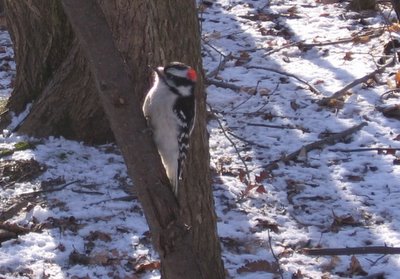
It was a pretty sad day for birding over at the Point today. Long stretches of nothing punctuated by aggressive Chickadee attacks. We're going to need a stategy to get through this winter. Going to have to spend some quality time over at the Firefly Forest Blog. It's eternal summer over there.
Saturday, January 21, 2006
Russula unidentified
Tuesday, January 17, 2006
Pholiota squarrosa


21 September, 2005
I have many good pictures of mushrooms that I have not yet been able to identify. This identification took about two hours to make. There are so many different kinds of mushrooms and each species can appear very different from instance to instance and each guide only covers a certain cross section of the species. At least I can be thankful that I'm not studying beetles... yet.
I have many good pictures of mushrooms that I have not yet been able to identify. This identification took about two hours to make. There are so many different kinds of mushrooms and each species can appear very different from instance to instance and each guide only covers a certain cross section of the species. At least I can be thankful that I'm not studying beetles... yet.
Subscribe to:
Posts (Atom)














